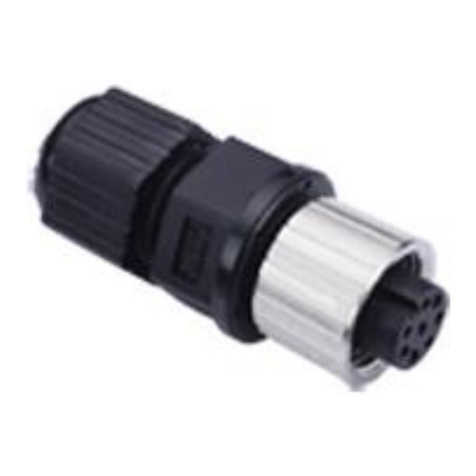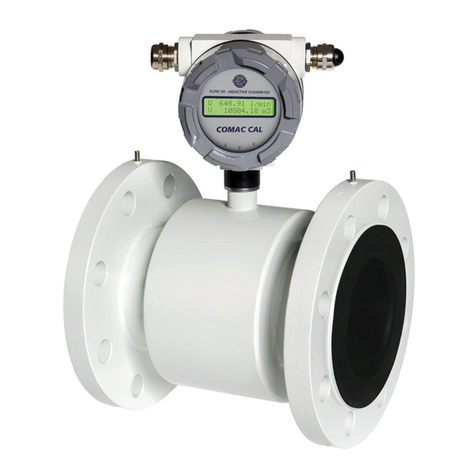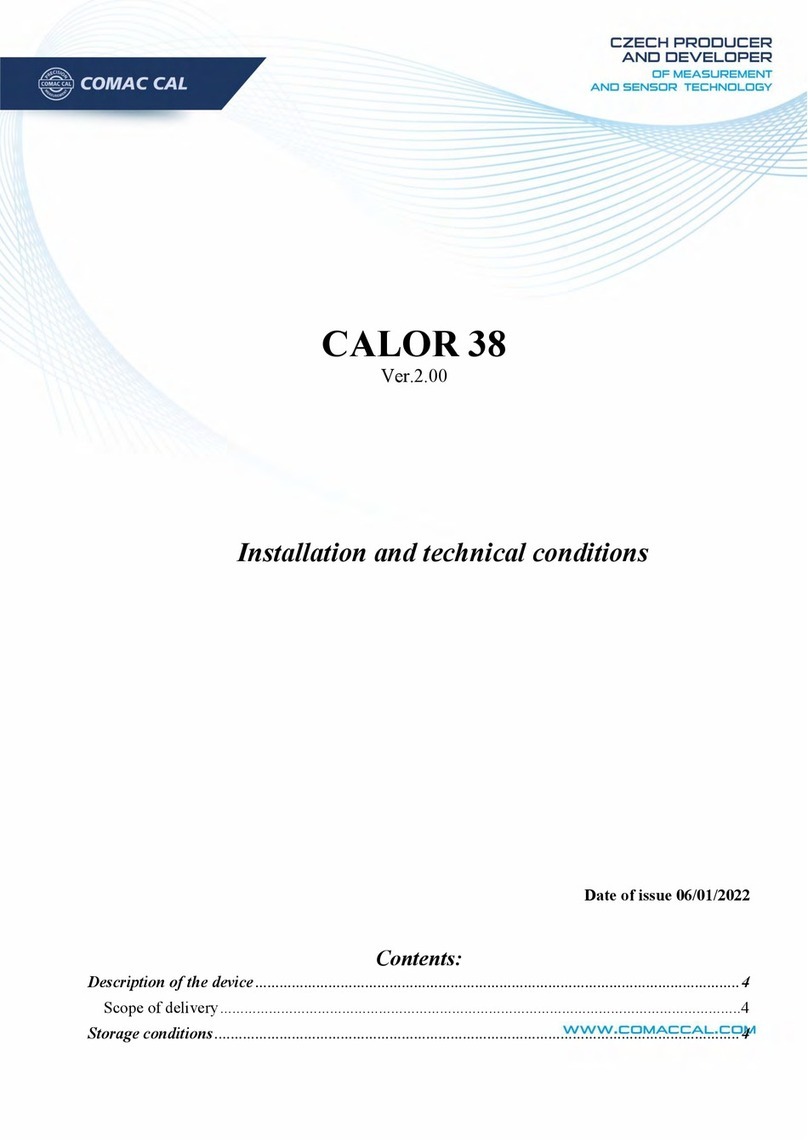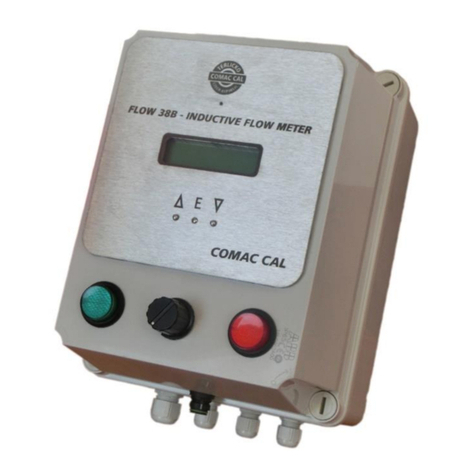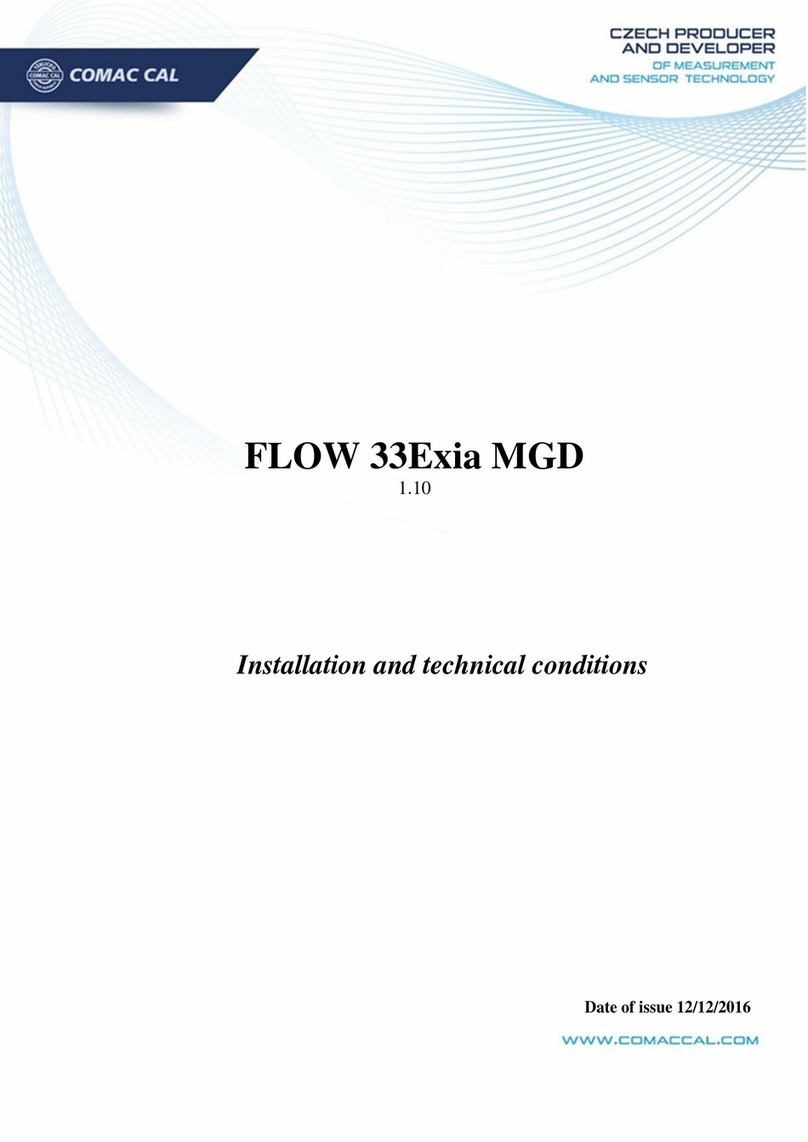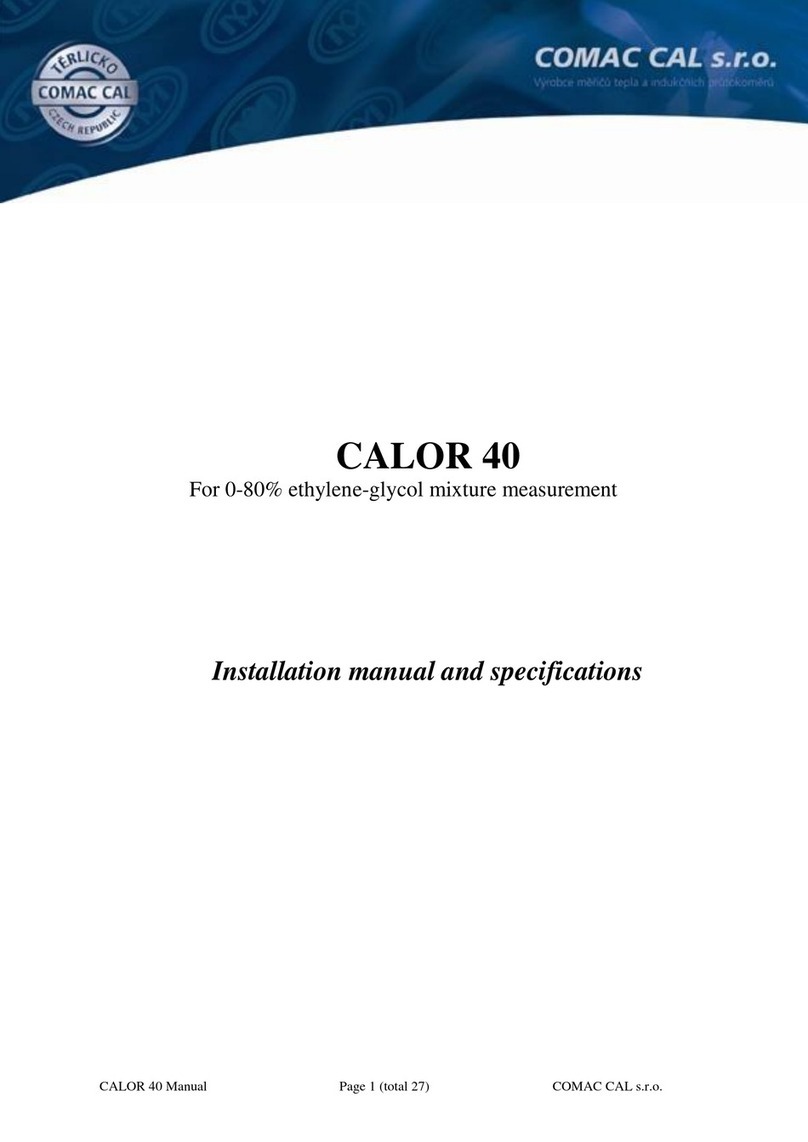
FLOW 33 Manual Page 5 (total 31) COMAC CAL s.r.o.
Installation in pipeline
Important information for selection of location
Outdoor conditions
It is necessary to ensure that the flow sensor is not exposed to weather effects and that the measured
medium cannot freeze in the flow sensor as it would damage the measuring tube.
In case of outdoor location of the electronic evaluation unit, the manufacturer recommends using a
protective box or a roof to avoid direct solar exposure so that the evaluation electronics cannot get
overheated.
Sources of disturbances
The following items rank among the most frequent sources of disturbances to the steady flow of
liquid:
Abrupt changes in pipe cross-section if not performed as a cone with an angle of 7° (where
is the angle made by bevelled walls of the pipe reduction).
Incorrectly centred sealing, low ID sealing or sealing made of soft elastic materials which are
pushed out into the interior pipe cross-section after flanges are tightened.
Anything interfering in the flow of liquid, for example thermowells, branch pipes, T-pieces,
bends, elbows, slide valves, cocks, flap valves, shut-off valves, control valves, butterfly valves
and check valves. Pipe outlets from tanks, heat exchangers and filters.
No intensive magnetic fields in the proximity of the induction flow sensor (detector) must be
present.
No sources of disturbances affecting the steady flow must be present in the straight pipeline
sections. They must be located in the piping after the flow sensor or at the farthest distance before it.
Sources of disturbances may substantially reduce the measuring range and accuracy of the flow
meters.
Vibration
We recommend supporting the connecting pipes on both sides of the meter for partial elimination of
vibrations. Levels and range of vibrations must be under 2.2 in the frequency range of 20 ÷ 50 Hz
according to IEC 068-2-34. If the pipeline is exposed to excessive vibrations (e.g. from pumps),
using compact meters is not recommended.
Actual location
The flow sensor (detector) must not be at the top position of the pipe which may be airlocked, or in
declining or even in horizontal pipelines with open ends in which air may penetrate. Impurities may
accumulate during long-term measurement of very low flow rates Q < 0.1 m/sec. There must be a
sufficient pressure in the place of flow sensor installation so that the expulsion of gas or vapour
bubbles from the liquid is avoided. Little bubbles that always occur in liquids may accumulate at any
of the electrodes and this may result in incorrect operation of the meter. Gas bubbles are expelled
also at an abrupt pressure drop. Therefore, butterfly valves and similar elements should be located
after the flow sensor. For the same reason, the flow sensor should not be placed at the suction side
of the pump. To prevent the bubbles from accumulation at a low flow in the flow sensor, it is
